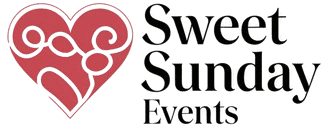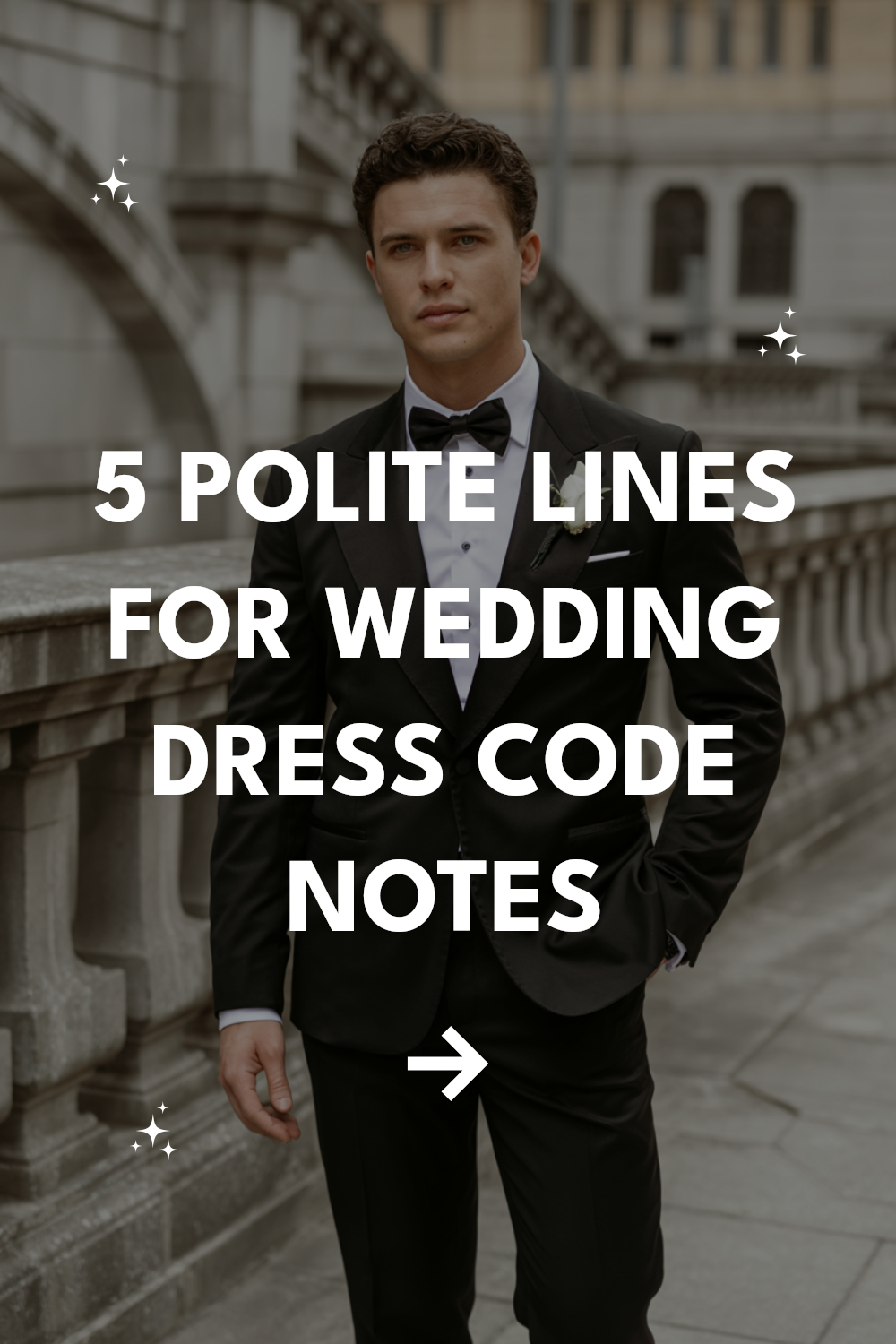Getting your wedding dress code right is like walking a tightrope between giving clear guidance and not sounding like a control freak.
Nobody wants their guests showing up in flip-flops to a black-tie affair, but you also don’t want to come across as bridezilla material before the big day even arrives.
The secret lies in crafting messages that feel warm and helpful rather than demanding. Here are five tried-and-tested lines that strike the perfect balance.
1. Cocktail Attire Requested
“We’d love for you to join us in cocktail attire as we celebrate!”
This phrasing works beautifully because it frames the dress code as an invitation rather than a command. The word “join” creates a sense of togetherness, like you’re all getting dressed up for the same fun experience.
Cocktail attire can be confusing for guests who aren’t sure if that means little black dress or something more elaborate. Following up with a brief explanation helps everyone feel confident about their choices without being overly prescriptive.
2. Garden Party Elegance
“Please join us in garden party attire for an outdoor celebration.”
Outdoor weddings present unique challenges because guests need to balance looking elegant with being practical. This line gives people permission to think about comfort while still maintaining the celebratory feel.
The phrase “garden party” immediately conjures images of flowing dresses, breathable fabrics, and shoes that won’t sink into grass.
It’s descriptive enough that most people can visualize what works without needing a detailed breakdown of heel heights and fabric choices.
3. Formal but Comfortable
“We invite you to dress formally while keeping comfort in mind for our evening celebration.”
Sometimes you want elegance but recognize that your venue or timeline might require guests to do some walking, standing, or dancing. This line acknowledges both needs without making anyone feel like they need to sacrifice style for practicality.
The beauty of this phrasing is that it gives people permission to make smart choices. Someone might opt for a lower heel or a dress with more stretch, knowing they have your blessing to prioritize their comfort.
4. Beach Wedding Guidance
“Please join us in beach formal attire – think flowy fabrics and shoes you can easily walk in on sand.”
Beach weddings are notorious for leaving guests confused about footwear and fabric choices. This line provides just enough specificity to be helpful without being overwhelming.
The key here is acknowledging the practical realities of your venue. Sand and stilettos don’t mix, and everyone knows it. By addressing this upfront, you’re saving your guests from awkward wardrobe malfunctions and yourself from seeing people struggle.
5. Semi-Formal with Personality
“We’d love for you to join us in semi-formal attire that makes you feel fabulous.”
Semi-formal is perhaps the trickiest dress code to communicate because it sits right in the middle of the formality spectrum. This line gives people a framework while encouraging them to choose something that feels authentically them.
The phrase “makes you feel fabulous” is doing a lot of heavy lifting here. It suggests that confidence and comfort matter more than hitting some arbitrary style mark, which tends to result in better-dressed, happier guests.
Timing Your Dress Code Communication
Getting your message right is only half the battle – timing matters just as much. Most couples include dress code information on their wedding website and save the dates, then reinforce it on the actual invitation.
Your wedding website is the perfect place to expand on dress code guidance without cluttering your formal invitation. Here you can include helpful details like “the ceremony will be on grass” or “the reception includes outdoor dancing.”
Don’t wait until the last minute to communicate expectations. Guests need time to shop, plan, or even get alterations done. Giving people at least two months’ notice shows consideration for their time and budget.
Handling Dress Code Questions
Even with the clearest communication, you’ll still get questions. Someone’s aunt will call asking if her navy dress is appropriate, or a college friend will text asking about tie requirements.
Prepare a few standard responses that maintain your warm tone while providing reassurance. Something like “That sounds perfect!” or “As long as you feel comfortable and celebratory, we’re happy” works for most situations.
The goal isn’t to become a personal stylist for every guest, but rather to provide enough guidance that most people feel confident in their choices. A little flexibility goes a long way toward maintaining relationships and reducing your stress.
Common Dress Code Mistakes to Avoid
| Mistake | Why It Doesn’t Work | Better Alternative |
|---|---|---|
| “Black tie required” | Sounds demanding | “Black tie requested” |
| “No jeans or sneakers” | Focuses on restrictions | “Semi-formal attire appreciated” |
| “Dress to impress” | Creates pressure and confusion | “Cocktail attire suggested” |
| “Formal attire mandatory” | Too rigid and commanding | “Formal attire preferred” |
The language you choose sets the tone for how guests feel about attending your wedding. Harsh or demanding phrasing can make people feel judged before they even arrive, while warm and inclusive language helps everyone feel excited to celebrate with you.
Being overly specific can also backfire. Nobody needs a paragraph-long explanation of acceptable heel heights or fabric weights. Trust your guests to make reasonable choices within the framework you provide.
Making Everyone Feel Welcome
The best dress code guidance makes people feel included rather than excluded.
Consider your guest list when crafting your message – are there elderly relatives who might struggle with certain requirements? Friends with young children who need practical clothing options?
Inclusive language acknowledges that people have different comfort levels, budgets, and body types. Phrases like “we want you to feel comfortable and confident” signal that the person matters more than their outfit.
If you’re having a destination wedding or outdoor celebration, consider the practical challenges your guests might face. A little empathy in your communication goes a long way toward ensuring everyone has a good time.
Final Thoughts on Dress Code Etiquette
The most important thing to remember is that your wedding dress code should serve your guests, not stress them out. Clear, kind communication helps everyone feel prepared and excited to celebrate with you.
Your wedding is ultimately about bringing people together to witness your commitment. When guests feel comfortable and confident in what they’re wearing, they can focus on what really matters – being present for your special day.
Trust that the people who love you want to honor your celebration by dressing appropriately. A little guidance paired with a lot of warmth usually produces the best results for everyone involved.


